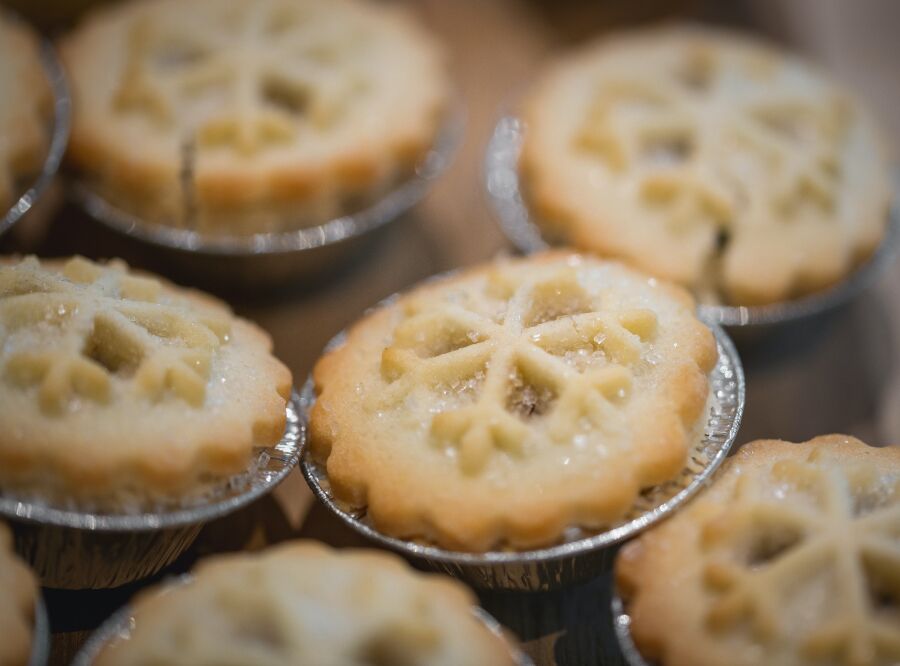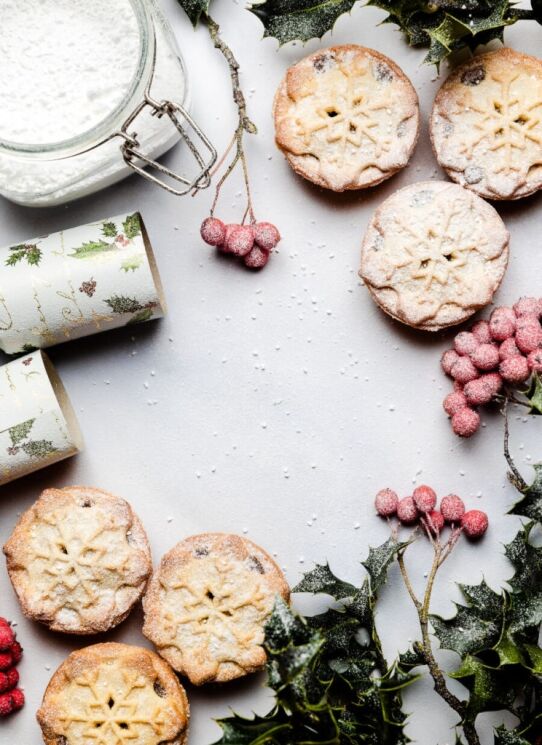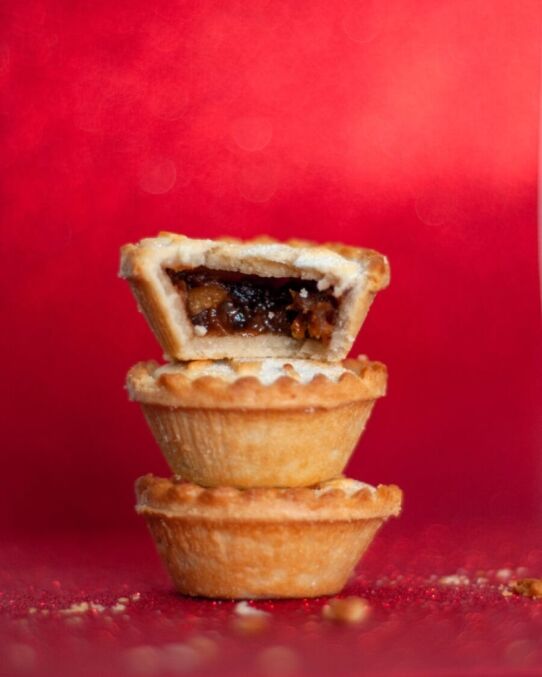The (not so humble) Mince Pie
Spicy Adventures
Your cart is empty.
SUBTOTAL
£0.00

Spicy Adventures
The mince pie, as we know it, is an individual sweet pie comprising a pastry case with a filling of dried fruit, spices, some form of spirit (hopefully!) and suet or other fats. Equally as symbolic of Christmas as the iconic Christmas cake, the mince pie is a much enjoyed English tradition eaten over the festive period. Who doesn’t love this aromatic offering with its beautiful short crust, its jewel-like fruit, its spices full of Eastern promise and that hint of alcoholic liquor? So delicious, it is surprising that the mince pie is not available, commercially, all year round.
The mince pie has a fascinating past. Originating in this country in the sixteenth century, it has religious connotations. Did you know that the original ‘Christmas’, ‘mutton’ or ‘shrid’ pie was a much larger item on the menu than it is now? Coming in the form of a ‘manger’, it was often decorated with a pastry depiction of Christ the baby on top. This symbolism extended further in that its thirteen ingredients were said to represent Jesus and his twelve disciples. The spices denoted the gifts of the Three Wise Men. Did you also know that since the main ingredient was meat it would have been served up as the main course?
Between 1644 and 1660 the Puritans banned Christmas celebrations regarding them as frivolous and decadent. The ‘idolatrous’ pie’s fate seemed to be sealed. However it survived, evolving over the years into a sweet dessert confectionary. Extremely popular in Victorian times, the mince pie filling consisted mainly of dried fruits and spices.

Nowadays we know that ‘mincemeat’ is neither minced (chopped into small pieces) nor meat. It was the Crusaders of the thirteenth century that first returned home with Middle Eastern recipes involving meat (mainly beef or mutton) fruit, peel, suet or other animal fats using various spices, spirits and sugar as preservatives. Eventually, with the increased availability of imported fruits and spices, the sweeter version of the mince pie flourished and became within reach of the masses. What’s more this ‘new’ mince pie can be enjoyed by an ever increasing number of vegetarians and vegans
Dried mixed fruit including raisins, currants, candid cherries, cranberries, apricots, peaches, figs and any citrus peel, along with chopped fresh Bramley apple and orange (peel included) can be used to make mincemeat.
Beef or mutton suet was the original fat used to make mincemeat. Nowadays the various alternatives include vegetarian or vegan suet, margarine, butter, or coconut milk.
Brandy is a favourite addition when it comes to mincemeat but any alcoholic beverage, either spirits or wine, can be an acceptable alternative.
Further sweetness comes in the form of sugar – of any description. We may feel better using a brown sugar but health-wise there is really no difference. In fact, go one step further and don’t add any at all! You may barely notice the difference as the combined taste of the fruit and the spices is enough to create food heaven!
Diabetes.co.uk – Seriously Fruity (yet sugar free) Mincemeat recipe.
The secret of an outstanding mince pie lies in the spices giving them that extra something. The aroma and taste of cinnamon, nutmeg, allspice berries, coriander, cloves, mace and ginger can truly work wonders! This is where mixed (pudding) spice comes into its own!
See – deliaonline.com Home-made Christmas Mincemeat

Traditionally mince pies are made using shortcrust pastry but it is also possible to use flaky or filo pastry. Adding interest by including orange rind, ground almonds and even icing sugar to the flour can still allow a result that is both vegetarian and vegan. Shop bought pastry is an easy and acceptable alternative.
For inspiration see
Orlando Murrin – bbcgoodfood.com Unbelievably easy mince pies
Paul Hollywood – bbcgoodfood.com Mince Pies
Mary Berry – Mary Berry mince pie recipe 2020
In the unlikely event of the need to keep your delicious mince pies – they can be frozen for up to three months. Otherwise they will last for a week in an airtight container, in or out of the fridge. Any milk, cream or egg ingredients will reduce their shelf life.
Shop bought mince pies are an acceptable alternative to home made and will last longer. However, to really wow your guests and earn yourself a few (more?) brownie points, why not be adventurous, experiment with your own recipe for mincemeat and offer a personal version of the mince pie? Think about a mincemeat and pastry plait, a plate tart with lattice decoration or a pastry lined flan dish with a crumble mix on top of the mincemeat. Serve with custard, cream or Greek yoghurt – indeed, with all three!! Warm up individual mince pies in the microwave or the oven. Dredge them with sifted icing sugar. Do as the Northerners do with fruit cake and pair them with a lump of cheese!
Don’t forget that mincemeat doesn’t just have to be used in a mince pie. It stores well. Added to a basic Victoria sandwich mix it makes wonderful muffins! Use as a filling for pancakes, mix with ice cream or even porridge. Be inventive! Use it to produce a veritable feast at any time of the year!


Understanding Spices
Spices have long been integral to the UK's culinary landscape, adding depth, flavours, and richness to a myriad of dishes. From the pungent aroma of cumin in Indian curries to...
Read MoreUnderstanding Spices
Confetti is an essential part of any wedding day. Not only is it a wonderful way to greet a newlywed couple, but it also provides some beautiful photo opportunities. The...
Read MoreSeasonal Ideas
It’s no secret that any handmade gift will always be more special than a store-bought one. Homemade food gifts are especially wonderful, a labour of love that shows someone you...
Read MoreHealth and Wellbeing
It’s no secret that winter’s cold and gloomy weather makes us crave indulgent dishes like fondue and baked goods like sticky toffee pudding and apple crumble. While Christmas is the...
Read More